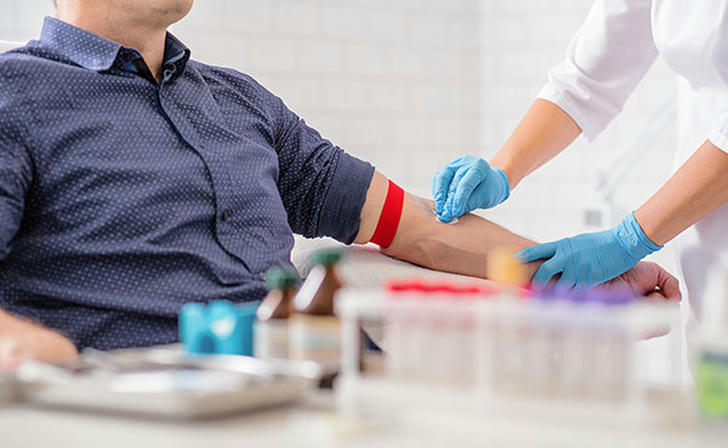How to Become a Certified Phlebotomist with Online Classes
If you’re looking for a rewarding healthcare career that doesn’t require years of schooling, becoming a certified phlebotomist might be the ideal path for you. Phlebotomists are essential in healthcare, responsible for drawing blood for tests, donations, and transfusions. And the best part? You don’t need to attend traditional classes to become certified. With online phlebotomy courses, you can learn at your own pace and prepare for a career that is in high demand!

Step-by-Step Guide
1. What Is Phlebotomy?
Phlebotomy is the process of drawing blood from patients for medical testing, donations, or transfusions. Phlebotomists are vital to the healthcare system, ensuring blood is collected safely and correctly for testing or donation. Because blood draws require technical skill and precision, proper training and certification are critical.
2. Why Choose Online Phlebotomy Classes?
Phlebotomy is an in-demand career with growing opportunities, and online programs make certification easier and more accessible. Here’s why choosing online classes for your phlebotomy certification might be the best option for you:
Flexible Scheduling: Learn at your own pace, on your own time, and balance other commitments.
Affordable: Online programs are often more cost-effective than traditional in-person courses.
Convenient: Study from the comfort of your home, allowing you to focus on learning without the commute.
3. Step 1: Choose an Accredited Online Phlebotomy Program
The first step in your journey is choosing the right online program. To ensure that you receive high-quality training, select a program accredited by reputable organizations such as:
• National Phlebotomy Association (NPA)
• American Society for Clinical Pathology (ASCP)
• National Healthcareer Association (NHA)
These accredited programs cover all essential topics, such as:
• Blood collection methods
• Anatomy and physiology
• Safety procedures
• Infection control
• Patient interaction
An accredited program guarantees that you will receive a recognized and respected certification.
4. Step 2: Complete Online Coursework
Once you’ve enrolled in a certified program, you’ll begin your online coursework. These courses typically include video lectures, reading materials, quizzes, and interactive assignments to ensure that you understand key concepts. Some programs even offer virtual labs to help you practice blood collection techniques.
Expect to learn about:
▣ Blood Collection Methods: Venipuncture (drawing blood from veins) and capillary (fingerstick) techniques.
▣ Anatomy & Physiology: Understanding the circulatory system, vein locations, and blood types.
▣ Infection Control: Proper handling of blood samples and contamination prevention.
▣ Patient Care: How to interact with patients to ensure comfort and reduce anxiety during the blood draw process.
5. Step 3: Complete Clinical Hours
While online coursework is essential, phlebotomy is a hands-on skill, so you must complete clinical hours where you can practice drawing blood under supervision. Many online programs partner with local healthcare facilities, allowing you to complete your clinical training in person. Expect to perform at least 100 successful blood draws as part of this requirement.
This hands-on training is critical for ensuring you gain real-world experience and feel confident in your phlebotomy skills.
6. Step 4: Pass the Certification Exam
After completing your online coursework and clinical hours, you’ll be ready to sit for the certification exam. Certification is often required by employers to verify your skills and competency. The most widely recognized certification bodies include:
▶ National Phlebotomy Association (NPA)
▶ American Society for Clinical Pathology (ASCP)
▶ National Healthcareer Association (NHA)
The exam typically covers topics such as blood collection procedures, anatomy, patient care, and safety protocols. Once you pass the exam, you’ll be officially certified and ready to begin your career.
7. Step 5: Find Employment as a Phlebotomist
Upon becoming certified, you’ll be able to apply for phlebotomist positions in various healthcare settings, such as:
• Hospitals: Emergency rooms, outpatient clinics, and lab departments.
• Blood Donation Centers: Collect blood for donations and transfusions.
• Private Laboratories: Work in clinical or research labs handling blood samples.
• Medical Offices: Collect blood samples for medical tests.
Phlebotomists can work full-time, part-time, or as contract workers, offering flexibility in terms of scheduling and work environment.
8. Salary and Job Outlook for Phlebotomists
According to the U.S. Bureau of Labor Statistics (BLS), the median annual wage for phlebotomists is approximately $37,000. Salaries can vary based on experience, location, and specialty, with higher earnings potential for those working in hospitals or specialized laboratories.
Job outlook for phlebotomists is strong, with employment projected to grow by 10% from 2023 to 2033, much faster than the average for all occupations. The increasing need for blood samples for diagnostic tests, blood donations, and medical research ensures that phlebotomists will remain in high demand.
9. Benefits of Becoming a Certified Phlebotomist
Becoming a certified phlebotomist offers several advantages:
• Job Stability: Healthcare roles are essential, and phlebotomy is no exception. As the healthcare industry grows, so does the need for phlebotomists.
• Career Growth: With experience and additional certifications, phlebotomists can move into leadership roles or specialize in areas such as pediatric phlebotomy or blood bank operations.
• Flexibility: Phlebotomy is an in-demand skill, and there are numerous opportunities to work in different environments, from hospitals to research labs, to blood donation centers.
Success Story: From Student to Full-Time Phlebotomist
Case Study: Lisa Miller
Lisa Miller was a stay-at-home mom looking to re-enter the workforce. After researching healthcare careers, she decided to pursue online phlebotomy classes through the National Phlebotomy Association (NPA). She completed her coursework and clinical hours in just a few months, passing her certification exam with flying colors.
Today, Lisa works full-time as a phlebotomist at a local hospital and says that earning her certification has been life-changing. “The flexibility of online courses allowed me to learn while managing family responsibilities. Now, I have a stable career in healthcare, and I feel incredibly proud of what I’ve accomplished.”
Lisa’s story demonstrates that with determination and the right training, anyone can transition into a successful career in phlebotomy, even in a short time.

Final Thoughts: Start Your Phlebotomy Career Today!
Phlebotomy is a rewarding, flexible, and growing career, and with online training programs, you can get started quickly and efficiently. From completing your coursework to earning certification, becoming a phlebotomist is a clear and achievable goal.
Don’t wait—start your journey toward becoming a certified phlebotomist today! With the right online program, you’ll be well on your way to a fulfilling and rewarding career.
Recommended Online Phlebotomy Programs:
Phlebotomy Training by National Phlebotomy Association (NPA): https://www.nationalphlebotomy.org
Online Phlebotomy Program by American National University: https://www.anu.edu
Phlebotomy Certification Online by U.S. Career Institute: https://www.uscareerinstitute.edu
Phlebotomy Technician Certification by National Healthcareer Association (NHA): https://www.nhanow.com
